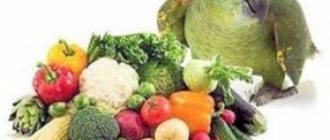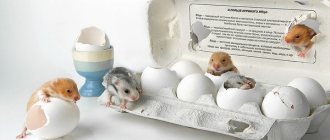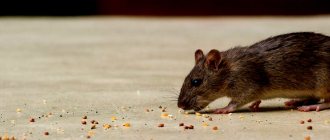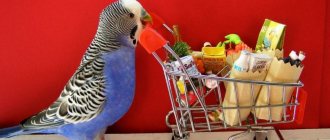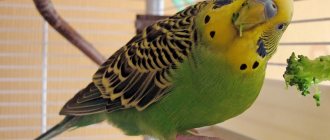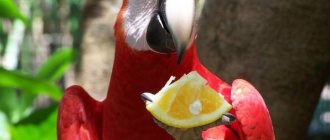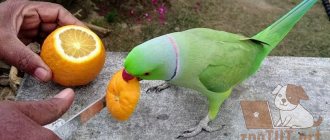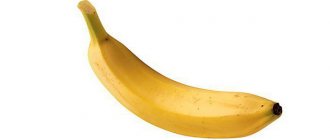In the wild, a bird's diet consists of 20% animal food, and the remaining 80% is plant food: grains, fruits, vegetables, etc. At home, these proportions are adjusted with industrial feeds and additives.
As a rule, premium-level solutions contain all the vitamins and minerals necessary for the pet’s body. Whereas budget food offers only the base. That is, the bird has to be fed on its own. Let's find out whether it is possible to give budgies a boiled egg and how to do it correctly.
Should I include it in my diet?
The product acts as food of animal origin. it is imperative to include chicken eggs in your pet’s diet They can be given either in pure form or as part of additional food. It all depends on the age, health and taste preferences of the bird.
You should not overfeed birds with boiled eggs, especially those kept in well-equipped enclosures and not in small cages. Excessive saturation of an animal’s body with nutrients is just as harmful as a lack of them.
Daily diet
Having figured out what else budgerigars eat besides food at home, breeders are wondering how to organize feeding. It is known that the basis of the diet is grain feed. You need two teaspoons of them per day. Using only grain feed is harmful to your pet, and therefore half of the daily menu is taken up by greens, fruits and vegetables.
To properly feed your parrot, you should follow simple rules:
- do not give the daily portion at a time;
- using only fresh products. Those not eaten during the day are removed in the evening;
- constant availability of fresh water near the feeder.
In addition, it is worth considering that if for some unknown reason the “wavy” refuses grain feed, it must be replaced with something else.
Do birds eat this kind of food?
A lot here depends on the pet’s personal preferences and its current diet. If it is varied enough, then the parrot may refuse the offered treat. The need of poultry for boiled eggs and the frequency of feeding is determined by a number of factors.
Feeding frequency:
once every 3-4 days during the mating season;- daily, immediately after the appearance of the young;
- during the molting period - once a week;
- after the chicks leave the nest - one egg in 4-5 days;
- the rest of the time - once a week.
Hatching eggs
The responsibilities of the female and the male in a pair are clearly delineated. The female incubates the eggs, and the male must bring her food, but he can also scratch his girlfriend’s feathers. Some males sit near the entrance to the nest and hum songs.
The female may leave the nest for a short time when she needs to empty her intestines. This is the best moment for the owner to clean the nest or at least add sawdust if the female reacts aggressively to interference in her home. But do not forget, it is recommended to do this with gloves, otherwise the young mother may completely pluck the chicks if they have already hatched, or peck the eggs, because they may not smell the same as before.
From time to time, the female turns the eggs so that they warm up evenly and the embryo does not fuse with the inner shell.
How to understand: there is an embryo in the egg of a budgerigar or it remains unfertilized? After 8-10 days have passed after the eggs hatch, they can be carefully picked up and viewed in bright light. If a dark spot and spider veins are clearly visible, then this is a fertilized budgerigar egg. If you do not observe this, the egg is light and without internal mesh, then this is an empty egg. Some experienced owners get rid of them right away, but if you are not sure that you are right, then it is best to leave the eggs and wait 21 days. After this period, you will know for sure whether it is unfertilized or you were simply mistaken.
Benefit
An egg yolk is 70% organic and 28% protein. It contains vitamins A, D, E and K, as well as fats and other elements important for poultry, such as phosphorus, sodium, potassium and iodine. If you cook an egg correctly, it will still contain minerals: aluminum, bromine and boron.
The yolk is almost 90% liquid, while the rest is B vitamins. They are especially useful for young animals , so eggs must be included in the diet of chicks and weakened individuals.
Regular consumption of boiled eggs helps strengthen the birds' immunity and rapid plumage growth, which is very important during the molting period.
How to cook to give
Eggs must be hard-boiled. Budgerigars should not be given soft-boiled, bagged or fried foods. Raw eggs can contain ligaments that are dangerous for the bird, so they definitely cannot be used in feeding.
Breeders use two methods of preparing eggs, which depends on the goal. In the first scenario, the yolk and white are used as additional food, while in the second, the egg is given separately, regardless of the base.
In its purest form
Boil the egg hard and cut it together with the shell into 2-4 parts. Then we wait until it cools down completely. Then we place the finished product in the feeder. Egg shells will act as an additional source of minerals.
This preparation format facilitates long-term storage of the product. Sometimes parrots are cunning and eat the yolk and white without touching the shell. In such cases, it makes sense to crush it by first rolling the egg between your palms.
In the feed
It is more rational to give the product in the form of an egg mixture with the addition of third-party ingredients. The egg must be hard-boiled and cooled completely in cold water. It should be boiled for at least 8 minutes. As a result, the yolk should become crumbly.
If the shell has acquired a gray-green tint, then this is a sure sign of overcooking. Such products are much more difficult for an animal to digest and cause significant discomfort.
Afterwards you need to peel the egg and grate it. If we are talking about young animals, then you should additionally mash the yolk and white with a pestle or chop with a knife. Next, you need to add the crushed egg to the mixture.
If the individuals are young enough, then the latter should include beets, carrots and a couple of tablespoons of semolina. Instead of carrots, you can add apples. All ingredients must first pass through a grater.
Sexually mature birds are given bran or crushed crackers made from white bread . All elements are thoroughly mixed and the result is crumbly food. One teaspoon per day is more than enough for one pet. The frequency of consumption of the mixture depends on the physical condition of the bird: nursing birds need it every day, while others need it once a week.
One of the clear advantages of this method is the hassle-free accustoming of the parrot to new foods, as well as the ability to add medications. The bird will not notice any additional ingredients in the new composition. In this way, you can accustom your bird to bone and grass meal and vitamin supplements that are not the most pleasant to the taste.
In the winter months and early spring, when animals are preparing to feed young animals, experts recommend adding fish oil to the diet (a drop per spoon of feed). Birds do not like it, but in a combined mixture they will eat it without any problems.
But this method also has its drawbacks. The fact is that the abundance of fresh ingredients makes the product perishable, which is especially critical in hot weather. That is, you will have to prepare the combined composition several times a day, which is not very convenient for owners who spend a good half of the day at work.
It is also useful to read: How to germinate grain for budgies
Can parrots have a boiled egg?
The answer to the question of whether this product is allowed to be included in the parrot menu is very simple. It is not only possible, but also necessary, to give all parrots - both budgerigars and cockatiels - a boiled egg.
Such important indicators as:
Therefore, the main characteristics of your pet’s diet should be:
- right;
- utility;
- balance.
In order for the menu to meet these requirements, it is necessary to supplement plant foods with protein products. Chicken eggs are famous for their high content of this substance of animal origin. Feathered gourmets will love this healthy, nutritious and tasty product.
It is worth noting that it is given to the parrot exclusively boiled, and only hard-boiled. The correct cooking order is:
- Place the product in a saucepan with pre-filled and salted cold water.
- Place the saucepan on the fire and wait until the water boils.
- After 1 min. reduce heat and cook for another 7-8 minutes.
- After this, you can turn off the fire - the eggs for the parrot are cooked, all that remains is to cool, peel and serve to your feathered pet.
You can present them to the bird in their entirety, but in this way the pet may pinch off a piece that is too large for its neck and choke. Therefore, it is better to serve the product to your pet either finely chopped or grated.
It is recommended to prepare a special dish for the parrot. To prepare it, you just need to grind part of the product and mix it with one of the recommended ingredients, also ground. The latter include:
- greens (beet or carrot tops, lettuce, scalded nettle leaves, clover);
- zucchini;
- carrot;
- squash;
- pumpkin.
Your parrot will definitely like this light and tasty, healthy and nutritious salad.
What quantity is allowed
The amount of nutrients in the poultry diet must be kept under strict control. Excess protein immediately affects the pet’s condition: activity and appetite decrease. In difficult cases, the animal experiences apathy: it loses interest in what is happening around it, and, huddled in a corner of the cage, begins to pluck its feathers.
A significant amount of protein is contained in milk and cottage cheese. You cannot combine chicken eggs with such products: you should give one thing.
If the bird has reached sexual maturity, is absolutely healthy and is not preparing for laying or molting, then half of one egg per week is enough for her . In combined feeds, the proportion of yolk and protein can be reduced by 15-20%.
After an illness, during the nesting period or after severe stress, the bird should increase the dose and feed it eggs every day. In such cases, the abundance of protein will contribute to a kind of restart of the immune system, which will have a positive effect on the pet’s rehabilitation. The situation is similar with young animals. A growing body requires a lot of nutrients: vitamins, minerals and organic matter.
How much to give
Consumption of eggs is beneficial only if it does not exceed the established daily volume. Failure to comply with the standards will turn the consumption of the product into harm. It is important to consider that this is still far from the only component of a bird’s diet that contains the protein that parrots need. Birds also get this substance from low-fat dairy products:
Therefore, you should control not only the consumption of eggs, but also the amount of protein your pet receives from the diet in general.
Oversaturation of a parrot's body with protein threatens such health problems as:
- apathy;
- inactivity;
- metabolic disease;
- digestive problems;
- obesity;
- passivity.
As ornithologist veterinarians emphasize, in order not to exceed the permissible amount of protein intake and to extract the maximum benefit from eggs in the form of microelements, it is recommended to give parrots an egg not completely, but one quarter at a time (the maximum dosage is half an egg, but only if you are sure that the bird does not get protein from other foods).
Giving your feathered pet a boiled chicken egg is not only recommended, but even required. This product contains useful substances and microelements that a parrot needs to maintain health and well-being. But it is very important not to overdo it with the inclusion of this product in the bird’s diet. Exceeding the recommended intake will not bring any benefit; on the contrary, it will result in health problems. It is worth noting that for different stages of a parrot’s life, the established consumption standards differ, therefore, when drawing up a menu for a pet, it is important to coordinate it with the optimal consumption schedule drawn up by ornithologist veterinarians.
What to look for when choosing a poultry product
It is worth mentioning the choice of eggs themselves, because today’s market offers a lot of options, and not every product is suitable as food for a budgie. First of all, it’s worth dispelling some myths.
The most common is color. It really depends on the chicken itself. In black, red and variegated breeds they are brownish in color, while in light breeds they are white. The color of the product does not in any way affect the set of elements.
You can also find eggs in stores marked “Bio,” “Eco,” or “Pure Organic.” In Europe, there is a similar gradation indicating that the bird was free-range and/or fed on natural grains. But in Russia there is no such certification, as well as guarantees that these registrations correspond to reality.
It is also useful to read: Grass for a budgie
Some believe that a rough shell indicates a mediocre quality of the product: an incomplete set of vitamins, a brittle structure, etc. Research by Roskachestvo has revealed that there is no connection between the texture of an egg and its contents.
What you should pay attention to when choosing eggs for your feathered pet:
- Production time.
- Manufacturer.
- Storage.
- Shelf life.
- Shell integrity.
The production date must be clearly indicated on the packaging. If it is absent, then giving such a product to birds, as well as to people, is dangerous. Choosing a manufacturer is simple: the closer it is to the point of sale, the better.
Eggs should be stored in a dry and clean room , where there are no strong odors. The shell, like a sponge, absorbs all the aromas, so it’s a good idea to smell the product before purchasing. The same goes for packaging. The parrot will not touch the offered treat if it smells strongly of third-party products.
If the female lives alone
It happens that an egg appears in the cage of the only parrot living in the house. Due to the difficulty of determining sex, such an event allows us to make an unambiguous conclusion that this is a female.
This phenomenon is not surprising: like chickens, the female budgerigar lays eggs without an embryo (since there was no fertilization). When held to light, such eggs are homogeneous and slightly transparent.
Many owners of budgerigars are confident that the bird will not lay eggs if there is no nest in the cage. In fact, she may use "furniture" in the cage (toys, feeders) for nesting or lay an egg at the bottom of the cage.
Most often, egg laying in a female living alone is provoked by long daylight hours and an excess of protein foods. Laying eggs greatly exhausts your budgie, so you should stop laying eggs as soon as possible.
Ways to stop egg laying
You can stop the egg-laying process due to hormonal imbalance in different ways.
- Restricting the bird's free movement around the room. They stop flying around the apartment for a while and keep her only in a cage.
- Moving a cell to a new location. Thanks to this, the female is distracted from the process and studies the changed situation.
- Changing your diet. All protein foods - eggs, cottage cheese - are removed from the poultry menu. It is recommended to temporarily abolish fruit and vegetable treats and sprouted grains. The diet menu contains only grains, mineral supplements and drinking water.
- Reducing the duration of daylight hours to 6-10 hours. That is, if the bird woke up at 7 o’clock in the morning, the cage should be closed no later than 5 o’clock in the evening. In such conditions, she quickly stops laying.
- Eggs are removed from the cage immediately when they appear, so as not to provoke the bird's brooding instinct. In addition, all objects that the female budgerigar can associate with reproduction are removed. For example, they place small feeders if the pet mistakes it for a nest.
- Reduce physical contact with the bird as much as possible. Do not pet or scratch her.
- Increase the frequency of water treatments for the wavy. More often they put a bath in the cage or spray the bird with a spray bottle.
